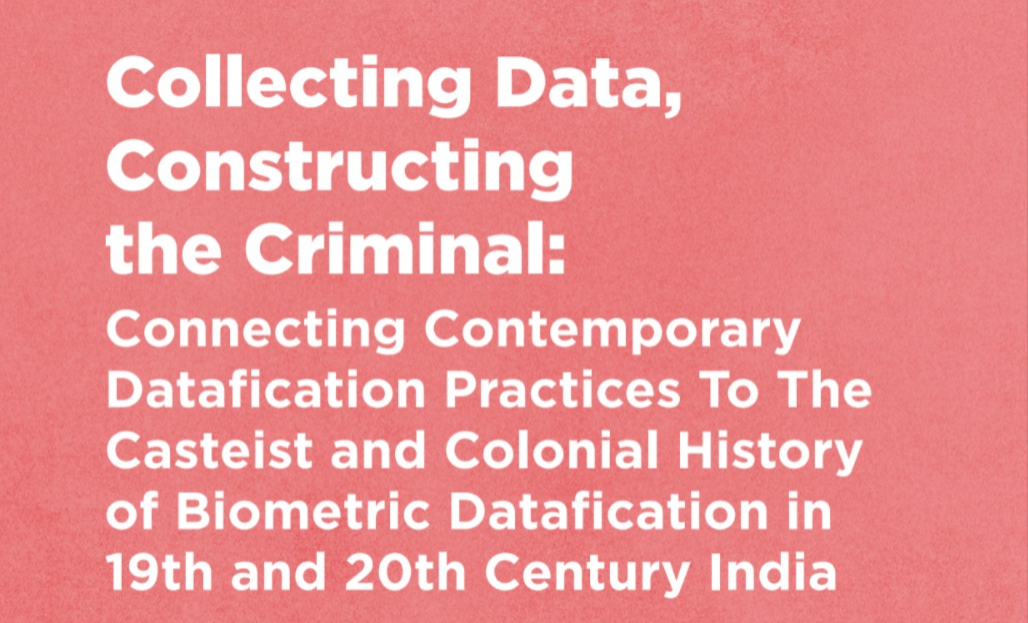Report | Amplifying Global South Voices in Digital Rights Policymaking | Governance and Regulation
Collecting Data, Constructing the Criminal: Connecting Contemporary Datafication Practices To The Casteist and Colonial History of Biometric Datafication in 19th and 20th Century India

In 2009, India launched Aadhar, the world’s largest biometric identification system. The system was praised by the World Bank and the International Monetary Fund, despite notable concerns over Aadhar’s privacy and security issues, and the possibility that the system would be used as a mechanism for state surveillance and control. The Indian state now exports Aadhar around the world, most notably to Kenya as well as other parts of East Africa. Indeed, over the last decade, organizations such as ID4Africa, the World Bank, and more have consistently looked to India as an exemplar for replicating national biometric platforms in Sub-Saharan Africa. Aadhar was closely followed with the launch of the Crime and Criminal Tracking Network & Systems (CCTNS) which aimed to integrate all the data and records of crime by the police.
With CCTNS, the State Police departments across the country found an opportunity to digitise existing data, link it to a common database accessible across the state, and use this dataset to trial new forms of ‘predictive policing’. A decade later, an upgrade on the CCTNS was envisioned in the form of the Interoperable Criminal Justice System (ICJS), which will integrate existing centralised databases the CCTNS, e-prisons, and e-courts. In doing so, it promises “seamless exchange of live data” among these branches and to inaugurate a new age of “SMART policing”. The expansion of digitalised police powers is especially concerning given the recent passing of the Criminal Procedure Identification Act (CPIA) in 2022. The CPIA replaced an earlier piece of colonial legislation called the Identification of Prisoners Act 1920 (IPA), which allowed for the collection of biometric data through methods such as photographing, fingerprinting, and other forms of bodily measurement.
The CPIA empowers the police to collect biometric data including DNA from accused, witnesses or any other person and store and share this data at a federal level, for 75 years. While existing critiques of the CPIA primarily focus on how the Act may threaten individual privacy rights, this research project aimed to situate the CPIA (and associated technological projects such as Aadhar, the CCTNS, and the ICJS) within a much longer trajectory of datafication practices that began under British colonial rule and, entwined with casteist power relations, extend into the present day. We intended to show how the supposedly neutral category of the ‘habitual offender’ that lies at the heart of both the IPA and the CPIA is merely a re-invention of the concept of the ‘hereditary criminal’, which emerged as a key figure in British colonial policing and was codified into Indian criminal law. This figure of the ‘hereditary criminal’ was, from the start, underpinned by colonial and casteist forms of discrimination.
This report was prepared by the Nikita Sonavane (CPA Project), Dr. Kerry McInerney (University of Cambridge), and Mallika Dharmaraj (University of Cambridge) and was an outgrowth of the Datafication and Democracy Fund, launched in 2024 to support organizations addressing the challenges of the intersection of datafication and democracy in the #GlobalSouth.
To check the complete file, access the link here.
DataPrivacyBr Research | Content under licensing CC BY-SA 4.0
